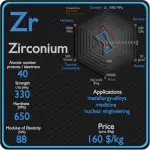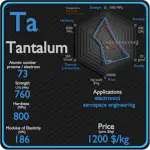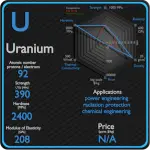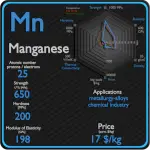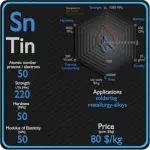This article contains comparison of key thermal and atomic properties of titanium and copper, two comparable chemical elements from the periodic table. It also contains basic descriptions and applications of both elements. Titanium vs Copper.
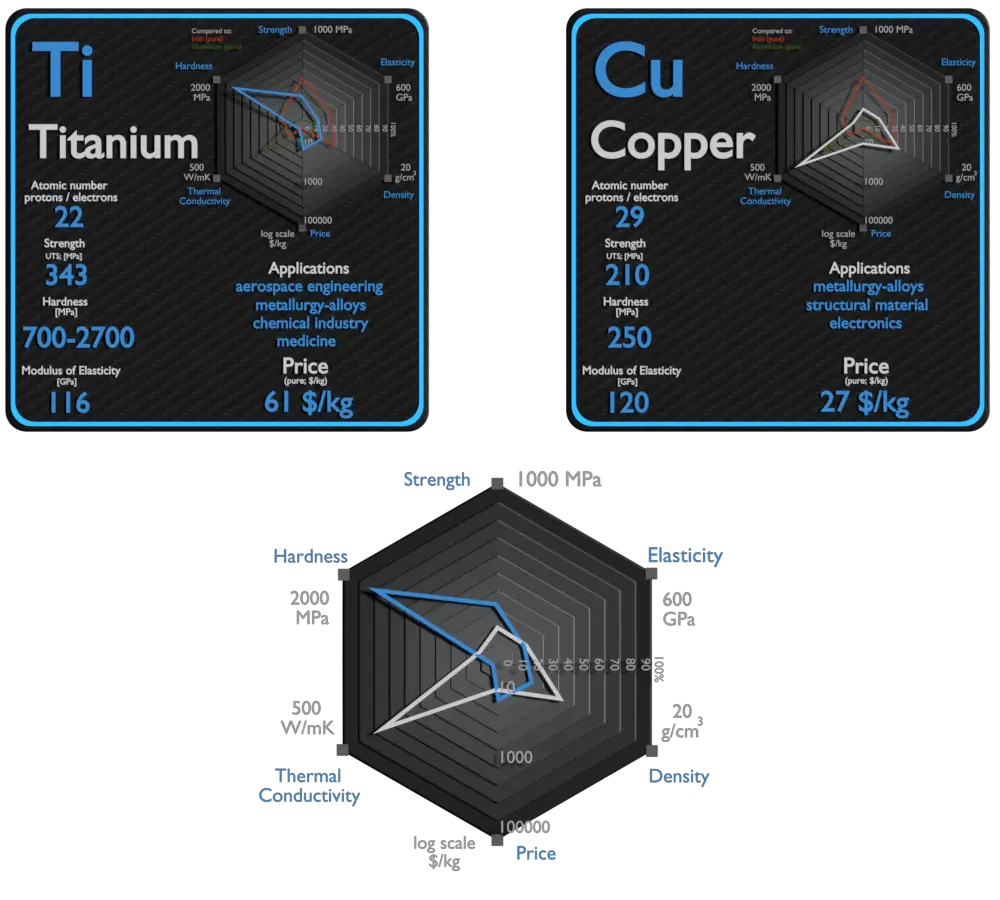
Titanium and Copper – About Elements
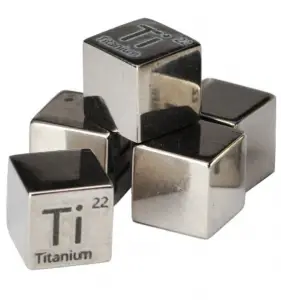

Source: www.luciteria.com
Titanium and Copper – Applications
Titanium
The two most useful properties of the metal are corrosion resistance and strength-to-density ratio, the highest of any metallic element. The corrosion resistance of titanium alloys at normal temperatures is unusually high. These properties determine application of titanium and its alloys. The earliest production application of titanium was in 1952, for the nacelles and firewalls of the Douglas DC-7 airliner. High specific strength, good fatigue resistance and creep life, and good fracture toughness are characteristics that make titanium a preferred metal for aerospace applications. Aerospace applications, including use in both structural (airframe) components and jet engines, still account for the largest share of titanium alloy use. On the supersonic aircraft SR-71, titanium was used for 85% of the structure. Due to very high inertness, titanium has many biomedical applications, which is based on its inertness in the human body, that is, resistance to corrosion by body fluids.
Copper
Historically, alloying copper with another metal, for example tin to make bronze, was first practiced about 4000 years after the discovery of copper smelting, and about 2000 years after “natural bronze” had come into general use. An ancient civilization is defined to be in the Bronze Age either by producing bronze by smelting its own copper and alloying with tin, arsenic, or other metals. The major applications of copper are electrical wire (60%), roofing and plumbing (20%), and industrial machinery (15%). Copper is used mostly as a pure metal, but when greater hardness is required, it is put into such alloys as brass and bronze (5% of total use). Copper and copper-based alloys including brasses (Cu-Zn) and bronzes (Cu-Sn) are widely used in different industrial and societal applications. Some of the common uses for brass alloys include costume jewelry, locks, hinges, gears, bearings, ammunition casings, automotive radiators, musical instruments, electronic packaging, and coins. Bronze, or bronze-like alloys and mixtures, were used for coins over a longer period. is still widely used today for springs, bearings, bushings, automobile transmission pilot bearings, and similar fittings, and is particularly common in the bearings of small electric motors. Brass and bronze are common engineering materials in modern architecture and primarily used for roofing and facade cladding due to their visual appearance.
Titanium and Copper – Comparison in Table
| Element | Titanium | Copper |
| Density | 4.507 g/cm3 | 8.92 g/cm3 |
| Ultimate Tensile Strength | 434 MPa, 293 MPa (pure) | 210 MPa |
| Yield Strength | 380 MPa | 33 MPa |
| Young’s Modulus of Elasticity | 116 GPa | 120 GPa |
| Mohs Scale | 6 | 3 |
| Brinell Hardness | 700 – 2700 MPa | 250 MPa |
| Vickers Hardness | 800 – 3400 MPa | 350 MPa |
| Melting Point | 1668 °C | 1084.62 °C |
| Boiling Point | 3287 °C | 2562 °C |
| Thermal Conductivity | 21.9 W/mK | 401 W/mK |
| Thermal Expansion Coefficient | 8.6 µm/mK | 16.5 µm/mK |
| Specific Heat | 0.52 J/g K | 0.38 J/g K |
| Heat of Fusion | 15.45 kJ/mol | 13.05 kJ/mol |
| Heat of Vaporization | 421 kJ/mol | 300.3 kJ/mol |





